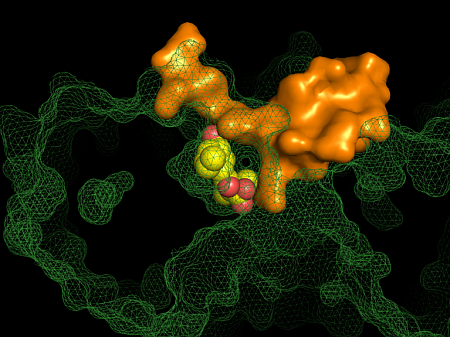Although historically within the realm of kinase inhibitors and ATP analogs, the field of small molecule therapeutics is broadening its horizons towards under-targeted regulatory pathways. The ubiquitin ligase system offers a most attractive pathway for specifically treating diseases such as cancer and neurodegenerative disorders. The ubiquitin system utilizes an enzymatic cascade that specifically tags protein targets with one or many small ubiquitin proteins, generally signaling the cell to send that protein for destruction. Many common chronic diseases involve critical deregulations of this system, including the loss of destruction of β-catenin by the ubiquitin ligase β-TrCP, a foundational mutation that underlies the deadly progression of many colon cancers. In recent work by the Zheng group and collaborators, Mother Nature provides a general lesson from plants regarding ubiquitin ligase regulation by small molecule hormones. The researchers recently discovered that the small-molecule hormones that regulate plant physiology, including jasmonate, auxin, and gibberellins, work on the molecular level by changing the function of ubiquitin ligases; pursuant study of a complex provided insight into the mechanistic and structural underpinnings of this phenomenon. Beamtime at GM/CA facilities was critical for the researchers to solve a high-resolution structure detailing the specific molecular bonds between the small molecule and its ubiquitin ligase target. They found that the small defense hormone, jasmonate, sits in a pocket, nestled between the ubiquitin ligase COI1 and its substrate, a JAZ transcriptional repressor. The structure and subsequent biochemistry revealed that the hormone sits perfectly between the two proteins and acts as “molecular glue”, increasing the affinity of one protein for the other. Interestingly, the complex of ubiquitin ligase, protein substrate, and hormone can form only when all three members are present — if one is not present, none of the members will associate with another. This molecular insight into the inner workings of plant biology provides a fantastic model for future development of drugs targeting the ubiquitin ligase system in other biological systems.
 |
Figure: Tripartite complex: COI1 portion of ubiquitin ligase shown in green mesh, jasmonate shown in yellow and red, and JAZ transcriptional repressor shown in orange. |
Citation: Sheard LB, Tan X, Mao H, Withers J, Ben-Nissan G, Hinds TR, Kobayashi Y, Shu F-F, Sharon M, Browse J, He SY, Rizo J, Howe GA, Zheng N. Jasmonate perception by inositol-phosphate-potentiated COI1-JAZ co-receptor. Nature. 2010 Nov 18; 468: 400-405. doi: 10.1038/nature09430.